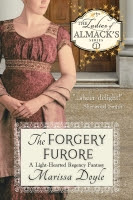[In May 2012, I
originally published this post after attending a track meet. One of the
comments on the post came from our own QNPoohBear, alerting me to a
mother/daughter team from my state who took pedestrianism to a whole new length
(pardon the pun). I’ve included some details on them at the end of the post.]
A certain young man of my acquaintance thoroughly enjoys
competing in track and field events and recently made it to the regional level
of competition. While running as a
competition has been around since the early Olympic games, we don’t often think
of the young ladies and gentlemen of nineteenth century England spending time
rushing about a track. Instead, they
might become Pedestrians.
A Pedestrian was a professional walker. He either competed against other pedestrians
for a prize or worked for the winnings from wagers on his/her ability to walk a
certain distance in a certain amount of time.
A popular feat was to walk 100 miles in less than 24 hours; those who
succeeded were called Centurions. Crowds
of up to 10,000 people lined the roads to watch, and cheer.
 One of the most famous Pedestrians of nineteenth century
England was Captain Barclay (Robert Barclay Allardice). In 1809, he set a record that became the one
to beat for nearly a century: He walked
for 1 mile an hour for 1,000 hours without stopping, starting on June 1 and
ending on July 12. And all this dressed
like a gentleman in top hat, cravat, and wool suit!
One of the most famous Pedestrians of nineteenth century
England was Captain Barclay (Robert Barclay Allardice). In 1809, he set a record that became the one
to beat for nearly a century: He walked
for 1 mile an hour for 1,000 hours without stopping, starting on June 1 and
ending on July 12. And all this dressed
like a gentleman in top hat, cravat, and wool suit!
But it wasn’t just the men who got into the act. As a young girl, Mary Wilkinson of Yorkshire
walked 250 miles to London in less than four days. She repeated the feat at age 90 with a keg of
gin and provisions strapped on her back, but in five days and three hours. (Must have been the gin.) In 1823, at only 8 years of age, Emma Matilda
Freeman walked 30 miles in 7 hours and 57 minutes through pouring rain. Her feat was reported as far away as America.
Now there’s a determined young lady!
But I will admit complete admiration for two Pedestrians
from my home state of Washington. Helga Etsby and her teenage daughter Clara
walked from Spokane, Washington, to New York City over the course of many
months in 1896 to claim a prize of $10,000 that would save their mortgaged
farm. Although their family story didn’t end happily, and the sponsor reneged
on the prize, that doesn’t diminish their accomplishment. Their story can be
read in Bold Spirit by Linda Lawrence
Hunt, now available in e-book.
I’d stand in the rain and cheer for them.






No comments:
Post a Comment